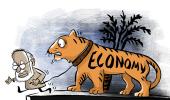Tourist arrival growth down to 1.9% over poor marketing and terror threats. Airlines, too, have been forced to reroute following airspace closure. UK and Australia advised their citizens from travelling to Srinagar following the Pulwama attack.

Foreign tourist arrival growth in India is slowing, prompting tour operators to call for increased government efforts in marketing and promotions.
Arrivals grew 1.9 per cent in first four months of 2019 after registering a subdued growth in 2018.
Last year, arrivals increased by 5.2 per cent to 10.5 million as against 14 per cent growth in 2017.
From January-April the country received 3.93 million foreign visitors a rise of 1.9 per cent over the same period last year.
Last year during the same period, 3.86 million foreigners visited India, tourism ministry data shows.
Arrivals declined by 4.8 per cent in March and rose 3-6 per cent during the other months.
Bangladesh, US, and UK remain the largest source markets for the tourism industry.
Terror attack on a Central Reserve Police Force convoy and subsequent Indian retaliation on terror camps inside Pakistan heightened tensions in the region leading Pakistan to close its overspace to India bound flights.
Airlines, too, have been forced to reroute following the airspace closure.
UK and Australia advised their citizens from travelling to Srinagar following the Pulwama attack.
According to an industry observer, the incident and subsequent advisories may have led to deferrals in corporate travel in March and, hence, the decline in numbers. India is a long-haul destination for Europe and the US and leisure holiday bookings are made 3-6 months in advance.
Poor marketing by tourism ministry is also cited as a reason for subdued growth.
“We are weak on global travellers’ bucket list,” an industry source remarked.
“While tourism has been a focus area for the current government and introduction of e-visa has been a positive factor, the government needs to get aggressive in its marketing,” said Homa Mistry, chief executive officer of Trail Blazer Tours, an inbound travel specialist.
Others, however, are hopeful of a revival. Karan Anand, head, relationships, Cox & Kings, said, “We are upbeat on the forthcoming inbound season that begins in September and we are expecting double-digit growth.”
An official from Union tourism ministry said the government was working on an action plan.
“We are working on better promotions and improving connectivity and are optimistic about growth.”
Aviation consultancy CAPA in its report last year had pointed out that India receives far fewer leisure tourists than countries in Southeast Asia while a large numbers do come to India for business, medical reasons and visiting friends and relatives.
The consultancy estimated 15-19 million foreign tourists will visit India in 2025 on the back of increased air connectivity and increase in popularity of e-visas.
Photograph: Rupak De Chowdhury/Reuters












 © 2025
© 2025